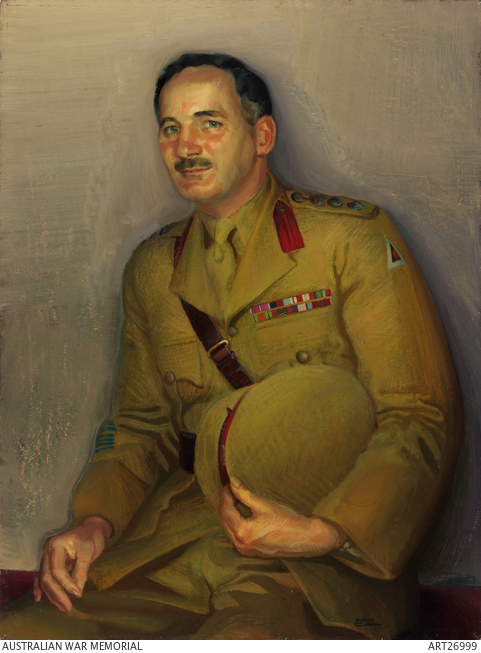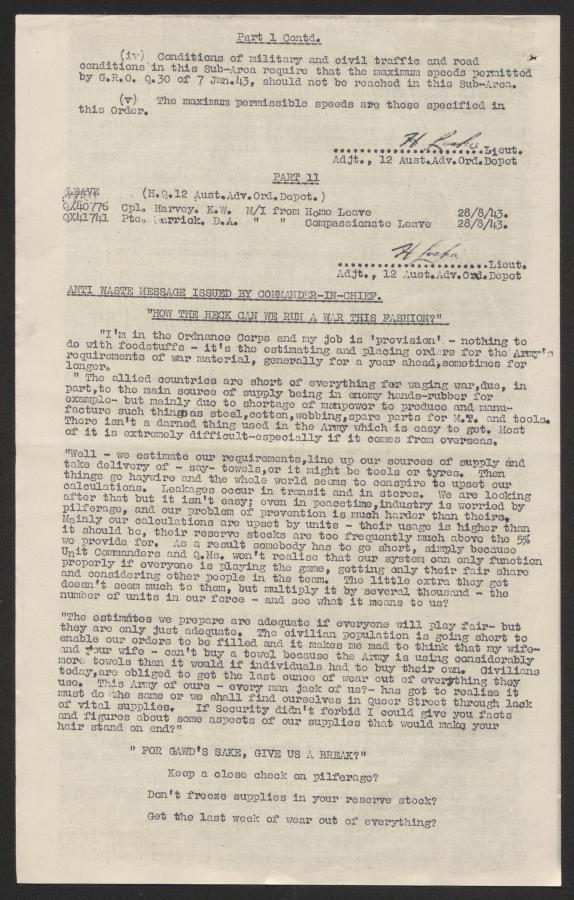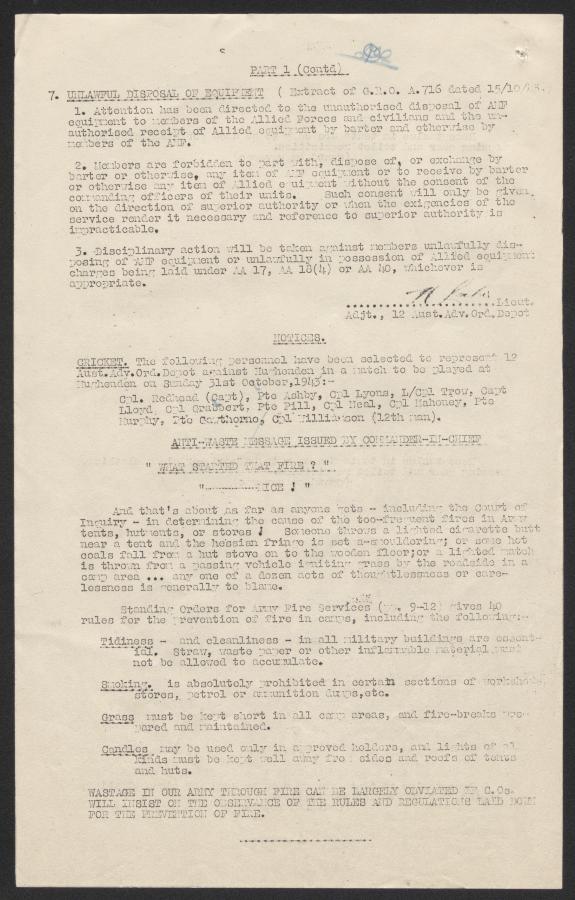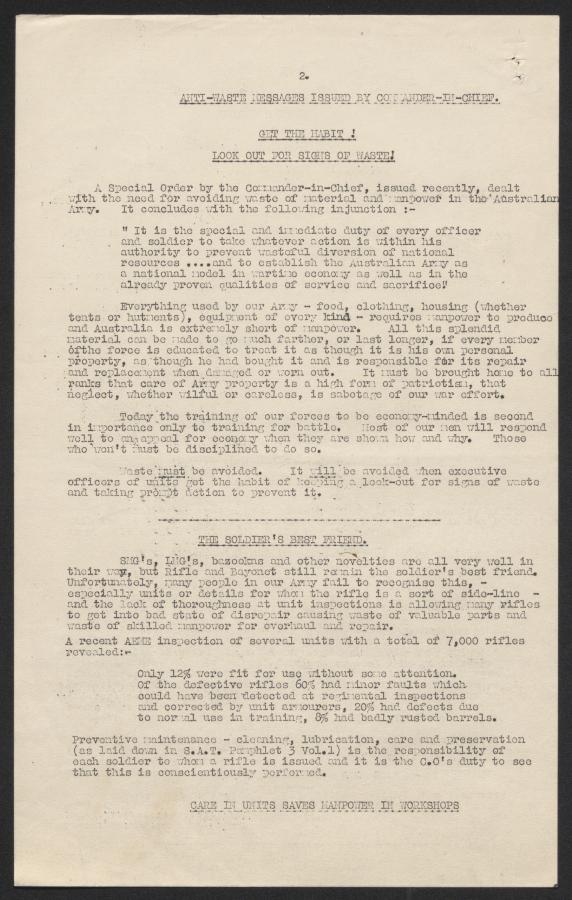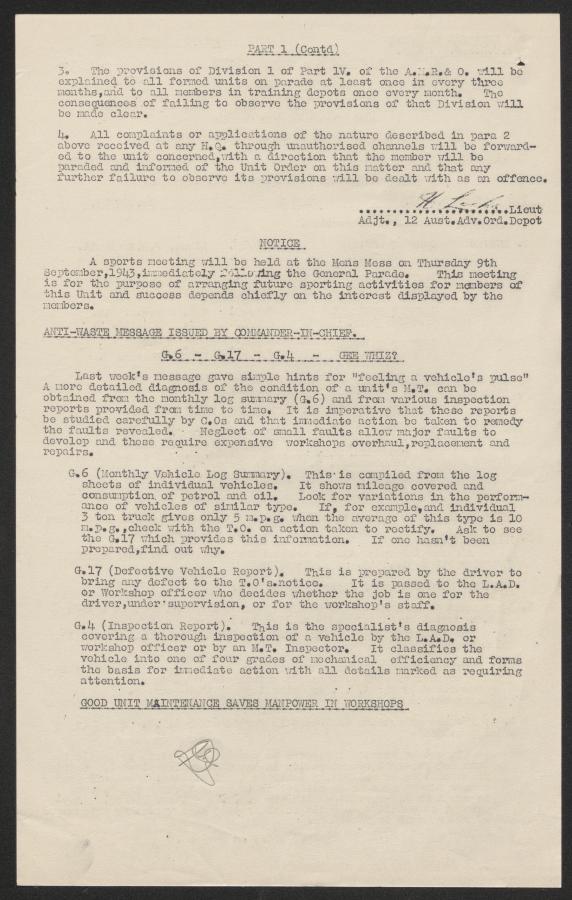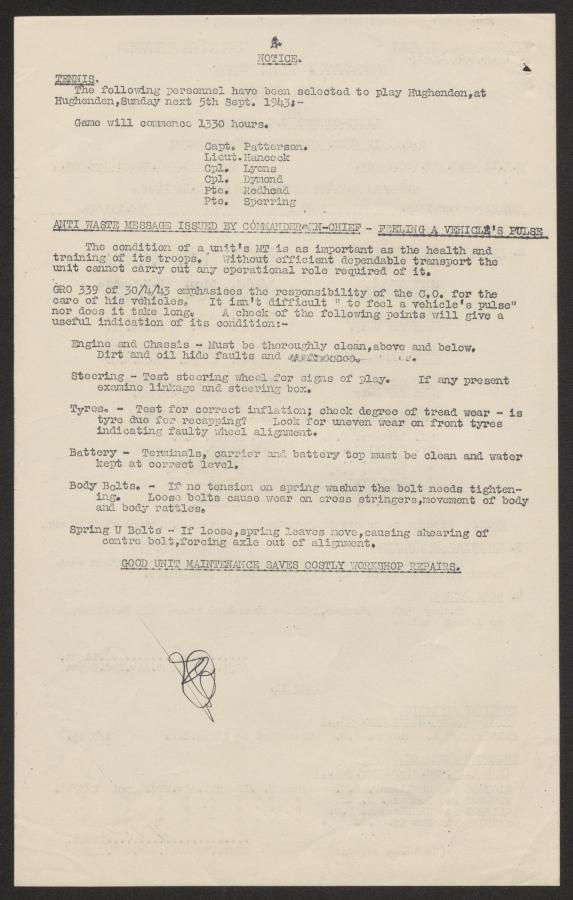STOP WASTE AND SPEED THE WAR EFFORT: War Waste in the Second World War
Efforts to reduce waste during war are well-documented. Numerous advertising campaigns have been launched during wartime to encourage civilians to save for the war effort. War waste was also a concern amongst the Australian Defence Force. Leadership issued routine orders urging troops to avoid waste in all forms. Some did so with authority, others with humour and flair. Collectively, their messages reveal a lesser-known issue during times of conflict: the war against waste.
Sir (Ernest) Edward "Weary" Dunlop, one of Australia’s most respected medical officers, took a firm stance on waste reduction. During the Second World War, he wrote routine orders that included a message after his signature: “STOP WASTE AND SPEED THE WAR EFFORT”. This note followed the mention of an “Anti-Waste committee” within the 2/2nd Casualty Clearing Station, with a list of appointed members.
Lieutenant Colonel Norman Menzies Eadie, who also served in the 2/2nd Casualty Clearing Station, used an individualised signature style on his routine orders, emphasising reducing waste. Often written in capital letters, examples include:
“HELP WIN THE WAR BY AVOIDING WASTE”
“TOTAL WAR MEANS TOTAL EFFORT - AVOID ALL WASTE”
“WIN THE WAR – AVOID ALL WASTE”
“EVERY MAN CAN PLAY HIS PART IN THE BLITZ AGAINST WASTE”
Eadie felt so passionately about the topic that his favourite phrase of “WASTE NOT – WANT NOT” began to accompany his routine order signatures as a stamp, saving time and allowing him to avoid having to repeat himself.
In 1943, Lieutenant Colonel J.W. Lawson of the 12th Australian Advanced Ordinance Depot was conveying the same message under the orders of the Commander-in-Chief General Blamey. These often lengthy messages sometimes contained humour, accompanied by statistics to validate requests. Topics covered included lighting, supply issues and theft, maintenance, environmental impact, fires and office supplies.
Lighting
“The Army is one of the country’s largest users of electricity for lighting, and a reliable estimate shows that if ten minutes per night were saved on every light in a typical hutment camp of 5,000 men, the saving in coal during a year could amount to 35 tons.” Lawson completes the message in capital letters, “BY SAVING ELECTRICITY YOU SAVE PRECIOUS COAL”.
Supply Issues and Theft
In August 1943 Lawson made a note about supply issues and theft. “The civilian population is going short to enable our orders to be filled and it makes me mad to think that my wife – and your wife – can’t buy a towel because the Army is using considerably more towels than it would if individuals had to buy their own.”
Maintenance
The issue of maintenance was raised a number of times, with clothing, vehicles and cookware mentioned: “Feet means boots and socks and care of these is not only an important part of soldierly training – it is an important saving of the country’s manpower effort. One pair of boots saved per man per year totals more than half a million pairs for our Army. Two pairs of socks saved means a million pairs less to manufacture. Both savings are within the bounds of possibility.”
This Australian Second World War poster was printed by the Commonwealth Coal Commission in 1944 to help promote the careful and sparing use of coal.
Environmental impact
Lawson responded to a reported incident by saying “marring of scenic beauty spots is pure vandalism, and Unit Commanders are required to use whatever means are at their disposal to prevent this growing tendency among the troops.” Lawson remarked on tree felling and bark removal as a waste of resources and unnecessary removal of natural beauty.
Fires
Occurred frequently in and around tents, the blame for fires was placed squarely on the shoulders of those who smoked, while candles were mentioned as a minor cause. A re-listing of the rules for the prevention of fires was provided that included being tidy, smoking in designated areas only, grass maintenance and correct candle use. The order was signed, “WASTAGE IN OUR ARMY THROUGH FIRE CAN BE LARGELY OBVIATED IF C.Os WILL INSIST ON THE OBSERVANCE OF THE RULES AND REGULATIONS LAID DOWN FOR THE PREVENTION OF FIRE”.
In September 1943, a special notice addressing careless driving was circulated, noting that this placed wear on tyres, transmission, car body and chassis. The note was signed, as always, in capital letters: “THERE’S TOO MUCH DRIVING FOR TOJO. DRIVE FOR AUSTRALIA – AND VICTORY”. Hideki Tojo, General of the Imperial Japanese Army during the majority of the Second World War, was also referred to in anti-theft posters distributed amongst the Australian forces.
Office supplies
Lawson reminded the men that “the Army is the country’s largest user of stationery and enormous quantities can be saved by general observance”. Additional conservation measures for ink, glue and string were strongly encouraged.
The Commander-in-Chief was quoted: “it is the special and immediate duty of every officer and soldier to take whatever action is within his authority to prevent wasteful diversion of national resources … and to establish the Australian Army as a national model in wartime economy as well as in the already proven qualities of service and sacrifice.” Lawson added that “care of Army property is a high form of patriotism, that neglect, whether wilful or careless, is sabotage of our war effort.”
Messages distributed in an effort to reduce war waste were not in vain, with examples of what is today known as upcycling seen by defence personnel throughout the Second World War. In one particularly heart-warming example, the 2 Garrison Battalion personnel constructed toys from scrap timber and donated them to the Legacy club in Woolloomooloo, NSW.
The Second World War Unit diaries for the 2/2nd Casualty Clearing Station have recently been digitised and will be available on the Memorial’s website in coming months.


